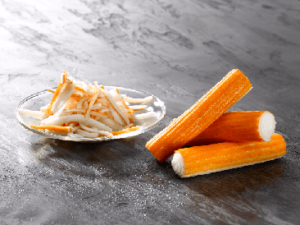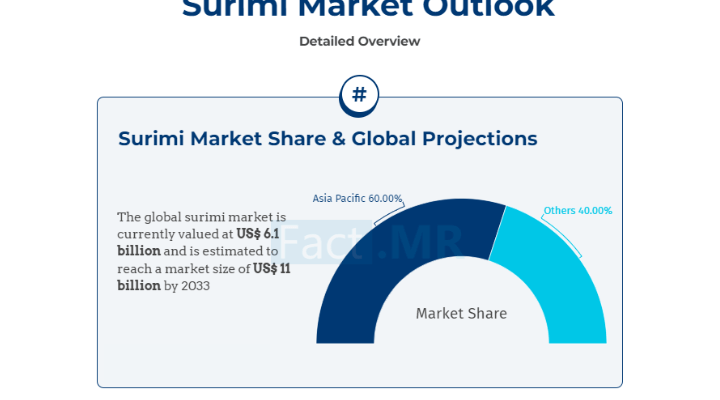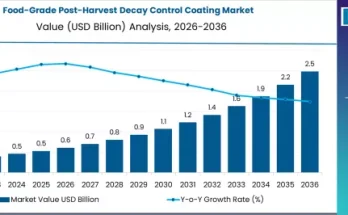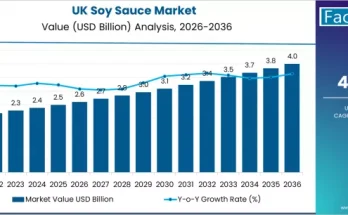Surimi Market Outlook: Trends, Opportunities, and Forecast
Surimi, the protein-rich seafood product is making waves in the global food industry. This processed seafood product made from white fish like pollock or hake has been a part of Asian cuisine for centuries. But its popularity is growing globally where healthy and convenient food options are in high demand.
What is Surimi?

Surimi is also known as “imitation crab meat”. It’s known for its ability to replicate the texture and flavor of crab meat at a fraction of the cost. The process involves washing fish meat to remove fats and unwanted materials and what’s left is a protein-rich paste. This paste is then mixed with starch, egg whites, and flavorings to create a product that can be molded into different shapes like crab sticks, fish balls, and more.
The surimi market is growing rapidly due to various factors such as an increase in consumer’s focus on healthy eating. Surimi is gaining popularity as it’s high in protein and low in fat. It’s seen as a healthier alternative to red meat and other processed foods. Besides this, with the busy lives of modern consumers, there’s a huge demand for convenience food. Surimi fits into this category perfectly as it can be used in various dishes from salads to sushi.
Moreover, Chefs and food manufacturers are experimenting with surimi and creating new and exciting products. This keeps the market fresh and appealing to a wider audience.
Driving Factors Boosting the Growth of The Surimi Market?
Innovations in processing technology will improve the quality and shelf life of surimi products making them more appealing to consumers. As health and wellness continue to be a focus, surimi’s high protein, low-fat profile makes it a top choice for health-conscious consumers.
Besides this, the globalization of food culture means more people are exposed to and willing to try new foods. Surimi with its versatility and unique texture will benefit from this trend. Apart from this, the push for sustainable seafood will shape the surimi market. Companies that prioritize sustainability will attract eco-conscious consumers and potentially get regulatory benefits.
The surimi market is a changing and exciting landscape with opportunities for growth and innovation. With its roots in traditional Asian cuisine and a future driven by health trends and sustainability, surimi will continue to make waves in the global food scene.
Surimi Market Valuation & Future Projections
Our analysis projects that the global surimi market is valued at US$ 6.1 billion and is estimated to reach a market size of US$ 11 billion by 2033. Currently, fish surimi holds around 50% share of the total market value. The in-depth research covers competitive aspects as well as latest developments in the surimi market growth.
Which Region Tops the Charts in Surimi Consumption?
Different regions have taken to surimi in different ways and that’s what makes the global market so dynamic:
- Asia-Pacific: The largest market for surimi, driven by countries like Japan, China, and South Korea. These countries have been consuming surimi for centuries and are the biggest producers and consumers. In Japan, surimi is a key ingredient in various traditional dishes like kamaboko and chikuwa.
- North America: The U.S. is seeing growing demand for surimi, especially in sushi and seafood salads. Health-conscious consumers love surimi’s nutritional benefits and its versatility makes it a popular choice in various culinary applications.
- Europe: Not a traditional surimi-consuming region, Europe is seeing increased interest due to the growing demand for healthy and sustainable seafood options. France and Spain are notable markets where surimi is gaining popularity.
Who are the Leading Key Players Contributing the Market Growth?
The surimi market is competitive with several big players such as Thai Union Group (the company is known for its surimi products and its strength is its wide supply chain and commitment to sustainability). Based in the U.S., Pacific Seafood Group uses wild-caught fish for their surimi. They focus on quality and traceability to ensure their products meet high standards. Other players such as Nissui have a long history in seafood processing. Their strength is their expertise in traditional surimi production methods and modern innovations. The company has a strong presence in Japan and various international markets. Another big Japanese player, Maruha Nichiro has a wide range of surimi products to cater to different tastes and preferences in different markets.
Opportunities in the Surimi Market
There’s so much room to create surimi-based products that cater to specific dietary needs like gluten-free, low sodium, or fortified with additional nutrients. As consumers become more environmentally conscious, there’s a growing demand for sustainably sourced seafood. Companies that adopt and promote sustainable fishing and processing practices will have a competitive advantage. Regions like Latin America and Africa are untapped markets for surimi. With increasing urbanization and disposable income, these areas will see a surge in demand for convenience and nutritious food.
To be profitable in this market, one of the key strategies is to partner with culinary experts, food bloggers, and nutritionists to reach a wider audience. Moreover, other activities such as educational campaigns about the benefits and versatility of surimi will also boost the market growth.



